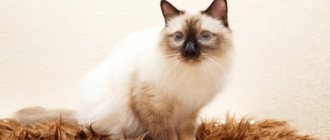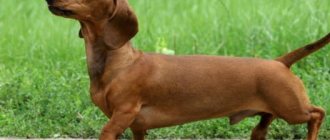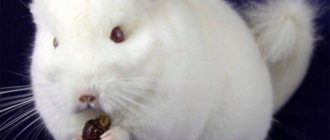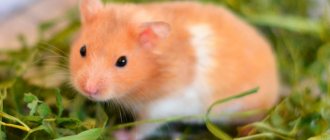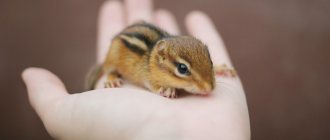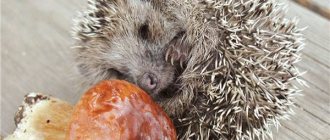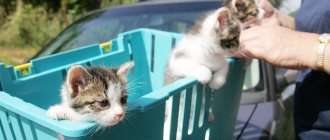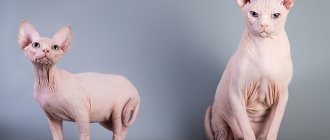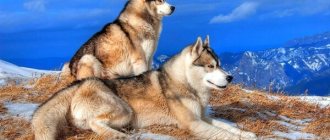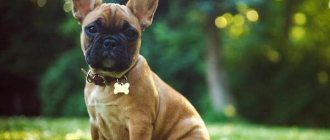- Wild animals
- >>
- Mammals
The sugar glider is hard not to like. These cute, unique and very tiny animals evoke only positive emotions. They have an extraordinary appearance and good disposition. Such animals are often kept at home by exotic lovers. However, acquiring such a pet without thoroughly familiarizing yourself with the characteristics of the sugar flying squirrel is not the best solution. You can learn more about the habits, appearance and other nuances of this animal below.
Description
The marsupial flying squirrel has a tail and body of approximately the same length - from 15 to 21 centimeters. The animal has short and soft fur, most often ash-colored. The possum's belly is light, and there is a dark stripe on its back.
Externally, the flying squirrel resembles a squirrel, but it is impossible to confuse them, since the possum has a number of features:
- between the front and hind legs on the sides the animal has a membrane that allows it to fly;
- the flying squirrel has large, round and very mobile ears;
- This animal has large dark eyes.
The exotic pet is able to bend its tail and hold small objects with it. And due to its sharp claws and fingers, which have a special structure, it handles food very deftly. Reviews from sugar glider owners often mention how fun it is to watch this animal eat food.
Let's summarize
As we can see, this sugar animal has many positive qualities, especially for keeping it at home. But unfortunately, this species is now listed in the Red Book, so people are trying to take care of them and their population as much as possible.
This cute animal is distinguished primarily by its unusual affection for its owner. Indeed, his behavior is very similar to that of a dog.
Therefore, as soon as the possum feels that you are not a threat to him, but, on the contrary, a faithful friend, a master who feeds and takes care of him, he will calmly become your faithful partner.
Drawing a conclusion, we can safely say that this furry animal will become an excellent pet, with the right approach to it.
About life in nature
In nature, flying squirrels are found in the forests of Australia, preferring eucalyptus trees. They spend almost their entire lives on them. During the day, the animals sleep in their shelters, and at night they are active. Possums feed on insects, small animals, juices and fruits of some plants.
Flying squirrels live in groups of seven. Each group has a dominant male and babies up to a year old. A distinctive feature of the group is its specific smell. It is the male who marks family members and his territory. The smell is considered a kind of sign of belonging; strangers are identified and expelled by its absence.
The energy of flying squirrels depends on the weather and time of year. During rainy and cold seasons, animals become lethargic and may even hibernate. This is caused by a lack of nutrition - this is how possums save vital energy.
Social structure and reproduction
Photo: Little sugar gliders
In groups of sugar gliders, as a rule, there are more females than males. Reproduction of future offspring is usually carried out by one male - the most important one, whom everyone obeys. The reproduction process of these animals most often occurs during the insect period, that is, at the beginning of summer. Males can fertilize females starting as early as five months. However, the best age for mating is considered to be one year.
Once pregnant, the female will carry the babies for another sixteen days. Marsupial flying squirrels are not very fertile. The female gives birth to only two cubs at a time. They are born blind, absolutely helpless. At birth, their weight does not exceed one hundred and ninety mg. Immediately after birth, small flying squirrels move into the female’s pouch and spend about seventy days there. During this time, babies' limbs are fully formed.
However, even after seventy days the babies are not ready for independent life. They remain under the care of their parents for some time. However, they can already live in the nest. As they develop, their eyes open and they acquire the skills to independently obtain food. And only after receiving such knowledge can flying squirrels live their lives and leave their mother’s nest. But most children still prefer to continue living next to their mother for several years.
Conditions for keeping a sugar glider
Nowadays it is very popular to keep flying squirrels at home. After all, her cute appearance leaves no one indifferent. It should be noted that this animal, like any other animal, has its advantages and disadvantages. Before purchasing, you should study them and only then make a purchase.
According to reviews from sugar glider owners, males mark their territory with a rather bad-smelling substance. Not everyone will like this. You will have to wash the cage and tray very often. It should be understood that a flying squirrel is not a cat or a dog; it cannot be trained to relieve itself in the right place. The animal will definitely do this not only in the cage, but also while walking and in flight. Thereby dirtying furniture, floors, and sometimes the owner himself.
Often in reviews of the sugar glider, the animal’s evening activity is noted. When purchasing an animal, you should be prepared for night noise.
At home, the animal lives longer than in the wild. Of course, the length of life in an apartment depends on proper care and nutrition, but it is still worth keeping in mind that the flying squirrel lives from 9 to 12 years.
Characteristics
The main feature of the marsupial flying squirrel is a thin membrane stretching along the sides of the body from the wrist to the ankle. When the possum jumps, the membrane stretches and forms an aerodynamic surface. This allows the animal to glide over a distance of up to fifty meters . By relaxing or tightening the membrane, the possum regulates the direction of flight. His tail and legs also help him with this. Thus, marsupial flying squirrels fly from tree to tree.
Male sugar gliders mark territory with scent glands located on the chest, forehead and back of the body. Males are distinguished from females by a small bald spot on the forehead, in the place where the gland is located. Female animals have a pouch in the center of their abdomen, which is intended for bearing offspring.
Where to keep a sugar glider
Keeping a flying squirrel in an apartment requires a lot of free space, as animals love to fly. The cage should also be spacious. There are special requirements for it:
- rods with PVC coating, the distance between which should be from 10 to 13 mm;
- reliable lock;
- drinking bowl;
- small feeders for different types of food;
- climbing equipment;
- scratching post;
- a house with an opening in which the flying squirrel will hide during the day;
- various attractions (wheel, etc.);
- Soft material is placed on the pallet in which the animal will not get entangled.
The cage and its contents must be made of safe material so that the animal does not get poisoned if it starts to chew something.
Cell
For one individual you will need a cage with a tray, an aviary, a terrarium or a display case with dimensions of 50-50-80 cm, for two 140-50-80 cm. It is better to provide the largest possible conditions. If a cage is used as a container, the bars should not be narrower than 1 cm.
Reference cell
What should be in the cage
Be sure to have a drinking bowl and several feeders. It is important that the squirrel is habituated, otherwise it may die of thirst. Small metal or ceramic feeders are required.
Inside the cage you need climbing structures, a house, branches, pipes, etc.
What shouldn't happen
There should be no materials inside the cage that could poison the animal. Curiosity and constant contact can cause a squirrel to try something, which can affect its health.
How to care for a flying squirrel
Judging by the reviews about the sugar glider, caring for it at home is not as scary as it might seem at first glance:
- Once every 3-4 days it is necessary to wash the cage;
- constantly provide the animal with the opportunity for communication and movement;
- when walking, remove traumatic and breakable objects from the room;
- when walking, it is worth covering mirrors and glass with curtains or fabric so that he does not crash into them;
- there is no need to bathe or comb the animal;
- The animal does not need vaccinations;
- If the animal does not grind its claws down on its own, they must be trimmed.
Diseases
Possums suffer from a fair number of ailments that affect their lifespan. Most often they are affected by metabolic bone disease associated with injury and poor nutrition. Possible diarrhea from overloading the stomach with fruit or due to parasites. Any treatment is carried out under the supervision of a veterinarian.
Irina Ivanishchena
I am engaged in professional breeding of hamsters and rats on an ongoing basis. I know something about them that most people don’t know. Always open to constructive discussion
Post Views: 3,064
What to feed your sugar glider
Reviews from sugar glider owners indicate that the main rule for a healthy diet for a flying squirrel is the exact ratio of proteins and carbohydrates: a ratio of 7 to 3. Water should always be present in the animal’s drinking bowl. Food should be given only while the animal is awake; it must be removed in the morning. Having food during the day can make your pet fat.
The possum's diet consists of fruits and insects. Sometimes you can give honey, plain yogurt and poultry without spices. Feeding what is on people's tables is strictly prohibited! Also, you should not give the animal grapes and a lot of nuts.
Care
Proper care will ensure a happy life and comfortable conditions for the possum. If you don't follow the rules, the animal will become depressed and aggressive.
Feeding
Health, and therefore the length of life and the mood of the animal, depend on proper nutrition. Diet affects smell and even aggressiveness.
Daily diet
The following rules will help you create a feeding plan:
- Fruits are the most important component in the flying squirrel’s diet; they should be about 70% of the total diet;
- The remaining 30% are protein components;
- It is recommended to minimize phosphorus concentrations and provide more calcium;
- Watch out for sweets - it should be a delicacy, not an everyday occurrence;
- It is allowed to diversify the food with meat (boiled turkey or chicken);
- Live food (insects) is also needed;
- Once every few days the possum is given honey - this affects its metabolism.
What is possible
Fruits and vegetables are cut into large pieces - this makes it easier to take the paws. The squirrel doesn't like small pieces.
Insects:
- Worms;
- Zoophobas;
- Banana crickets.
Dairy products:
- Cottage cheese;
- Kefir;
- Yogurt.
You can also give baby food, cereals and meat (chicken, turkey). These are all sources of protein. The diet should also contain carbohydrates - these are fruits (dried, pureed, etc.).
Nuts, honey, and drops are suitable as treats.
What not to do
Human and too fatty food is not suitable for the possum. More specifically, it is prohibited to give:
- Bird food;
- Grapes and raisins;
- Lettuce, cheese;
- Excessive amounts of nuts.
Housing
You need to understand whether you plan to buy one or two animals at once. If the owner does not have time to deal with the squirrel for several hours every day, then it is better to choose the second option. More often, possums of different sexes are purchased to form a pair.
The housing should be located in a slightly dark place, away from the bedroom - this will help to avoid sounds at night. The cage also needs to be protected from drafts, heat sources, direct rays of the sun, plants, furniture - everything that the squirrel can reach. Content temperature is from 20 to 30 degrees Celsius. The tray should contain wood filler to absorb the smell.
Fur and claw care
Although the flying squirrel is unclean, they take a little care of themselves - like cats, they lick themselves, cleaning their fur with their claws and tongue, so the owner does not have to painstakingly care for the fur.
Swimming is not permitted. The squirrel is not afraid of water, but is not adapted to swimming and, without proper supervision, can drown even in a small basin or jar. If it happens that the baby gets very dirty with something, you need to carefully wipe him with a damp cloth or cotton towel soaked in boiled water. After completing the procedure, the animal must be dried completely and avoid being in a cool room or in a draft.
Sometimes owners leave a sand bath in the cage for bathing - but this is not necessary. Squirrels don't even climb there.
The animal sharpens its claws on its own - on imitation wooden branches that should be in the cage. If for some reason they have grown too much, they will still have to be cut off using a nail clipper (like for cats or dogs).
Breeding
Breeding possums is far from the most profitable and easy business. There are a number of good reasons for this:
- To maintain a pair, decent conditions are required (food, care, cage);
- a pregnant female requires additional food costs;
- finding future owners is not an easy task;
- veterinary care is very expensive;
- the character of pets engaged in raising offspring changes for the worse in relation to humans;
- Caring for a couple requires isolated space and a lot of time.
Females
In females, like in males, there are many, but less pronounced, exocrine glands located on the body. The vagina and uterus of female possums are bifurcated and separated from each other, similar to the male’s penis. On the belly of the female short-headed flying squirrel there is a pouch, inside it there are 4 nipples. The bag should not be red or swollen, otherwise this is evidence that the animal is unhealthy.
Flying squirrels have a short gestation period - up to 17 days. As a rule, from 1 to 3 cubs are born, the size of a steamed grain of rice. After giving birth, the female possum licks the cubs and licks her fur, smoothing the way from the newborns to the pouch. Along this “path” they move to a cozy “house”, where they attach themselves to the nipple, after which it swells. They will remain in this position until the moment they are able to get out. The “journey” takes about 5 minutes, and the babies will mature in the bag for another 60–70 days.
After leaving the “house”, the cubs need another 8 weeks to adapt to the outside world and switch to the diet for adults. While this is gradually happening, the babies continue to be on a milk diet.
